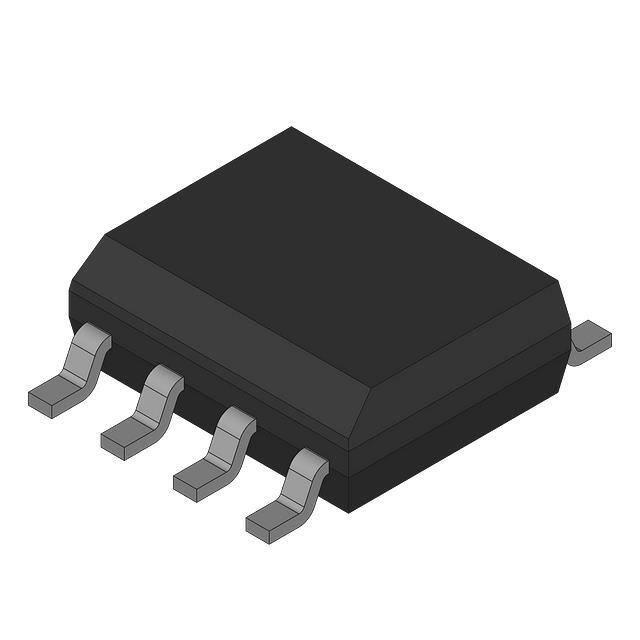What is the Difference Between AC and DC Motors
Electric motors are machines that convert the electrical energy from either the stored power or the direct electrical connection into mechanical energy. This is possible through the production of rotational force. The electric motor is mainly classified into two types. They are the AC motor and the DC motor. The AC motor takes alternating current as an input, whereas the DC motor takes direct current.
An Overview of AC Motors
AC motors convert the alternating current into mechanical power by using the phenomena of electromagnetic induction. They consist of a stator and a rotor. The flow of current through the stator creates a rotating magnetic field, which induces a current in the rotor. The interaction between the two magnetic fields turns the rotor, which causes the motor to rotate. AC motors eliminate the need for brushes and commutators, making them low maintenance and efficient.
In addition, AC motors can operate over a wide range of speeds and do not require a gearbox, thus simplifying the design of the drive train and reducing mechanical losses. However, AC motors typically require more complex control systems than DC motors.
An Overview of DC Motors
DC motors, also known as brushed motors, are a type of electric machine that converts electrical energy into mechanical energy. DC motors use direct current and consist of a rotor (rotating armature windings) and a stator (stationary electromagnet). A commutator attached to the armature changes the direction of the current, allowing the armature to rotate as long as there is current. Adjusting the voltage level or the static magnetic field current changes the output speed. These motors use brushes and commutators to switch the direction of current in the motor windings. DC motors are simpler to design than AC motors and are known for their high starting torque for applications requiring frequent acceleration and deceleration.
Compared to AC motors, DC motors are less complex and more affordable. However, the brushes and commutators of DC motors wear out over time and need to be replaced, making them more demanding to maintain.

Differences Between DC and AC Motors
1) Permanent: As different electrical appliances use various amounts of power at different rates, it’s not possible to have a permanent electric source that delivers constant voltage and current. But, when you use a DC motor with a permanent magnet, it can be connected to a transformer that converts the voltage to higher or lower and the current can be adjusted. In other words, if you have applied a voltage of 120VAC and a household appliance uses 60W of power but operates at 60VAC, you can connect your large loads such as refrigerators and air conditioners to the motor.
2) Mechanism: An AC motor moves due to the interaction between electromagnetic force and the magnetic field created by the permanent magnets in it. Whereas, the moving force in a DC motor comes from the interaction between electromagnets and steel pieces (permanent magnets) placed over them. DC motors are easy to control, but their rotational speed depends on the applied voltage and load. On the other hand, AC motors have high starting torque, but they can be controlled more easily with variable resistors.
3) Type of power: In comparison to an AC motor, a DC motor requires no physical parts such as coils or magnetic materials. It uses electromagnets which act like huge electrostatics capacitors in that they can store and release energy very rapidly, which is essential for a DC motor to have high torque at very high speeds. Also, magnets used in a DC motor are permanently fixed together and they do not move relative to each other while they rotate in a stationary stator. On the other hand, electromagnets in an AC motor are temporary magnets that move relative to each other in the rotor.
4) Temperature: The temperature of an AC motor is high because of the heat created from friction and also from the manipulation of electrical current. But a DC motor generates very low heat as compared with an AC motor.
5) Transformer: A transformer is an electrical device that changes AC voltage into low or high-frequency AC voltage.
6) Inverter: In an AC motor, the electromagnetic current is interrupted between each circuit as it passes through the magnetic circuits. But, in a DC motor, there is no such interruption between each circuit so that electricity can continuously flow within them. That is why you don’t need to turn off lights or any appliances when you are done with them.
Advantages of AC Motors vs. DC Motors
Both AC motors and DC motors demonstrate unique advantages that make them suitable for different applications. Below we outline the benefits offered by both types of motors.
Advantages of AC motors include:
1. Lower startup power demands
2. Better control over starting current levels and acceleration
3. Broader customizability for different configuration requirements and changing speed and torque requirements
4. Greater durability and longevity
Advantages of DC motors include:
1. Simpler installation and maintenance requirements
2. Higher startup power and torque
3. Faster response times for start/stop and acceleration
4. Wider variety for different voltage requirements
Considerations of AC vs. DC Motors
Several factors come into play when choosing between an AC or DC motor in an electric vehicle. Here are some of the main differences to consider:
| Parameter | AC Motor | DC Motor |
|---|---|---|
| Cost | AC motors often come at a higher cost but provide better long-term efficiency and performance | DC motors are generally less expensive upfront, making them an attractive option for budget-conscious applications. |
| Efficiency | AC motors are highly efficient due to the absence of brushes and commutators, thus reducing frictional losses | DC motors have brushes and commutators, thus increasing frictional losses resulting in low efficiency |
| Control | AC motors offer better control and variable speed capabilities, making them suitable for demanding motor applications. | DC motors have simpler speed control systems but may lack the precision and responsiveness of AC motors |
| Maintenance | AC motors generally have lower maintenance requirements due to their brushless design | DC motors, with brushes and commutators, need periodic maintenance and may require more frequent repairs |
Applications of AC and DC motors
Some of the important applications of AC and DC motors are listed below.
Applications of AC motors
AC motors are widely used because of their simplicity, robustness, reliability and efficiency. Some of the common applications of AC motors are listed below:
HVAC Systems - AC motors are widely used to power fans, compressors and other mechanical equipment in HVAC systems.
Elevators - Squirrel cage induction motors are commonly used as lift motors due to their ruggedness, reliability and low maintenance costs.
Industrial Machinery - AC motors are used to power conveyor belts, pumps, milling machines, lathes, drilling machines, grinders, etc. in factories and industrial plants.
Pumps - Centrifugal, axial flow and positive displacement pumps typically use AC motors to drive impellers or rotors.
Applications of DC motors
Here are some of the main applications for DC motors:
Electric Vehicles - DC motors power the traction systems of electric vehicles (e.g., electric cars, hybrids, golf carts, forklifts, etc.) because of their high torque at low speeds.
Cranes - DC motors are used to power slewing drives and trolley drives for overhead cranes.
Robotics - DC motors are commonly used as actuators in robots to provide motion. DC motors are easily interfaced with digital controllers used in robots.
Remote Control Vehicles - Remote control toys, cars, boats, and aircraft use small, lightweight DC motors to provide power.
Conclusion
As technology advances, both AC and DC motors play a vital role in power generation operations in a variety of industrial, commercial and residential applications. Since there are advantages and disadvantages to each of these two motor types, it's important to understand the differences between them to ensure that you choose the right motor for your equipment.


